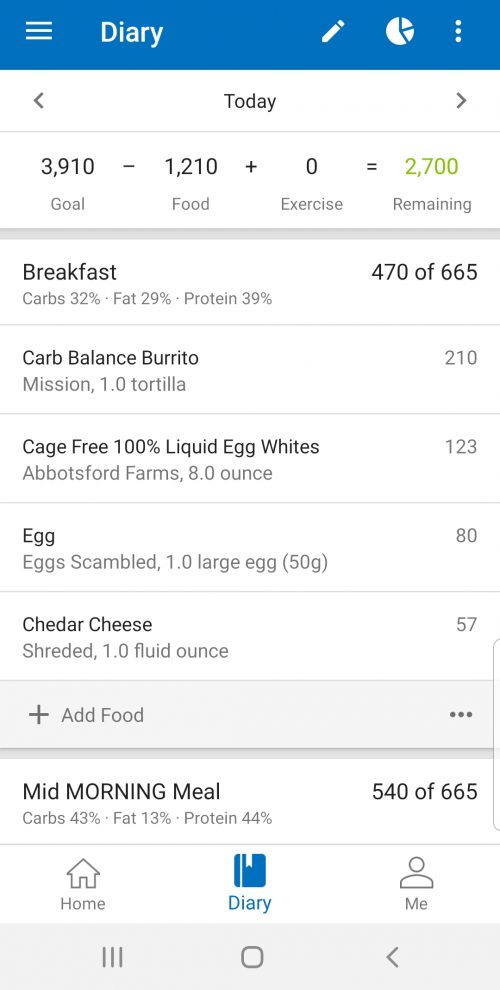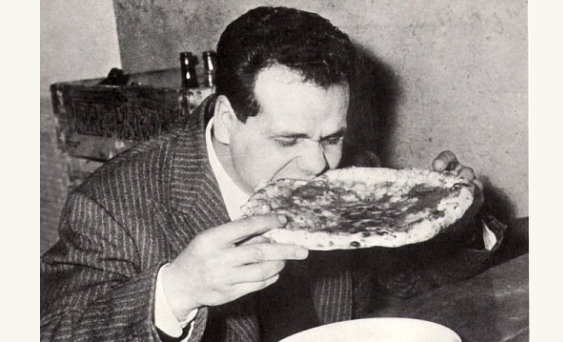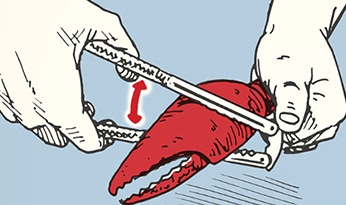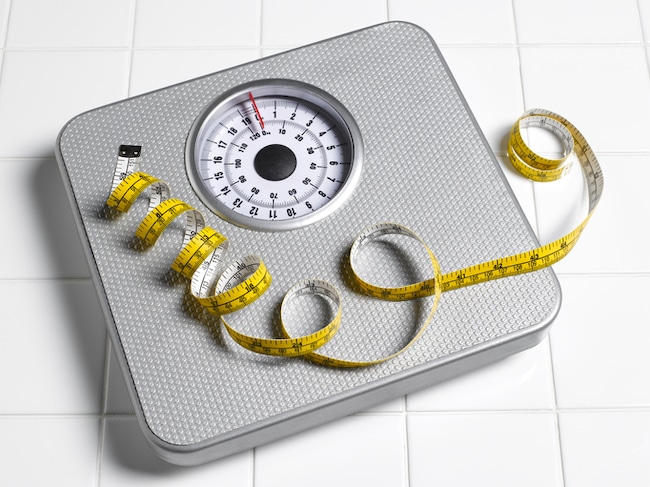
It’s a new year, and for a lot of people, losing weight is their primary resolution. Yet they’ve probably made this goal before, and failed before. This time they really, really want to make it happen.
One barrier these folks will often feel in even getting started, however, is choosing the right diet to follow. Should they go keto? Do intermittent fasting? Do the Zone diet or the raw food diet?
Folks can find success with any number of diet plans if these plans fit their personality and lifestyle, and can be sustained indefinitely (you do not want to yo-yo diet).
But today I’m going to share with you the diet plan I recommend most. I think it’s one of the most sustainable and effective, and can in fact be used in conjunction with other kinds of diets.
It’s the system I’ve personally used for the past four years to lose (and sometimes gain) weight, pack on muscle, trim inches off my waist, and get stronger.
It’s really not a diet at all — at least not in the traditional way people throw that word around: I don’t limit the types of foods I can eat nor do I massively restrict calories. I get to eat pretty much anything I want, including Little Debbie brownies, pizza, and Chick-fil-A spicy chicken sandwiches.
This “diet” is called tracking your macros. And today I’ll walk you through how to make it a simple but transformative part of your life.
What Is Macro Tracking?
“Macros” is short for “macronutrients,” which are the primary components of food: protein, carbohydrates, and fats.
When you track your macros you aim to consume a predetermined amount of protein, carbs, and fat each day. It doesn’t matter what you eat (within reason) to hit those goals. As long as you stay within your macro goals for the day, you’re good.
Tracking your macros as a nutrition system is often called “If It Fits Your Macros” (IIFYM for short) because, well, you can pretty much eat anything as long as it fits your macros; there are no foods or food groups that are off limits. For this reason, it’s also called “flexible dieting.”
Macro tracking is flexible in a couple other ways as well.
First, it can be used to gain weight and maintain weight, and not just lose weight.
Second, you can use it in conjunction with other kinds of diets.
Do you like to intermittent fast? Well, you can incorporate macro tracking into that to ensure you get enough of the nutrients you need during your eating window.
Are you doing low carb? You can track macros for that to know if you’re actually eating low carb and if you’re getting enough calories to support your energy needs.
Whatever your health or fitness goals are, macro tracking has got you covered.
Why Track Macros Instead of Counting Calories?
All diets essentially work by putting you into a caloric deficit, so why not just count your calories instead of tracking your macros?
When you track the number of grams you consume of each macronutrient, you do indirectly count your calories as well. Each gram of macronutrients corresponds to a certain number of calories:
- 1 g of protein=4 calories
- 1 g of carbohydrates=4 calories
- 1 g of fat=9 calories
When you set targets/limits on your macro goals, you also set targets/limits on your calories. Macro tracking has an advantage over pure calorie counting, however, in that it helps ensure you get enough protein in your diet — which builds muscle and improves athletic performance. It also allows you to manipulate the proportion of fat and carbs you use for your energy sources. Through experimentation, you can find if your body runs best with fewer carbs and more fat, or vice versa.
My Experience With Macro Tracking
Macro tracking has been a game-changer for me. I’ve tried a few fad diets in the past, including the low-carb variety like Paleo and Atkins. I was able to lose weight on these low-carb diets, but my performance in the gym suffered due to the lack of carbs. And instead of looking healthy and strong, I’d look deflated. That’s just me, though. Other folks may have success with low-carb diets (especially if they’re just focused on losing weight rather than athletic performance).
Another problem with other diets was compliance. I’d stick to the diet pretty religiously for a few weeks, but eventually my willpower depleted and I’d find myself gorging on lots of food I “shouldn’t” have been eating. I’d then get back on the wagon, only for the cycle to begin again.
Once I discovered macro tracking, I was able to manipulate my nutrition depending on my fitness goals. If my goal is to get big and strong, well, I just set my macro intake higher, particularly my carb intake. If I need to shed some body fat, then I reduce my macros and consume more fat than carbohydrates.
But the biggest benefit of flexible dieting is that it gives me back autonomy over what I eat. There’s no list of forbidden foods. I don’t have to endure the daily battle of living in the most varied, interesting food landscape in history, while only being able to eat from a list a dozen items long. I’ve never felt deprived or guilty about what I eat since I started tracking macros. I eat the foods that I enjoy as long as it fits within my macro goals for that day.
The sense of autonomy that flexible dieting provides is a big reason I’ve been able to sustain this way of eating for four years straight. Research shows that in order for health behaviors (like healthy eating) to be sustainable, the behaviors have to be freely chosen. As soon as you feel like you’re being told what to do or what you should eat, you’ve already sewn the seeds of failure.
How to Track Your Macros to Lose (or Gain) Weight
How to Figure Out What Your Macro Goals Should Be
The first step in tracking your macros is figuring out what your daily macro goals should be.
This will vary depending on your current weight, your activity level, health issues (e.g., if you’re diabetic you may need to eat fewer carbs), and what your fitness goals are. Ideally, you’d work with a certified dietician who would help you establish what your daily macro intake should be.
If you’re not in a position where you can consult a dietician, you can use a macro calculator online. Most are free, but may require you to sign up for their site. The best free macro calculator that I’ve come across is https://www.iifym.com/. (You do have to sign up with their site to get your results.) You answer a few questions about your weight, activity level, and goals, and they provide your macro breakdown.
Based on my experience tracking macros, here are rough guidelines you can use to calculate your macro intake based on whether you want to lose weight or gain weight. These calculations assume that you’re working out three times a week and can eat a relatively high carb diet.
Losing Weight
- Protein: 1 g x your bodyweight in pounds
- Carbs: 1 g x your bodyweight in pounds
- Fat: .27 g x your bodyweight in pounds
So using these numbers, if you weigh 240 lbs and you’re trying to lose weight, your macro intake would look like this:
- Protein: 240 grams
- Carbs: 240 grams
- Fat: 65 grams
- Total calories: 2505
If you wanted to eat fewer carbs than fat, you could switch things up by eating 100 grams of carbs and 127 grams of fat a day. Keep the protein the same. This breakdown would still give you 2,505 calories which will likely put you in a caloric deficit, meaning you’ll lose weight.
If you’re losing about 1 pound a week, you’re good. If not, you’ll need to make some adjustments (more on that below).
Gaining Weight
- Protein: 1 g x your bodyweight in pounds
- Carbs: 2 g x your bodyweight in pounds
- Fat: .75 g x your bodyweight in pounds
So using these numbers, if you weigh 155 lbs and you’re trying to gain weight, your daily macro intake would look like this:
- Protein: 155 grams
- Carbs: 310 grams
- Fat: 116 grams
- Total calories: 2,904
Again, you can modify this based on whether you want to do high carb or low carb. Just keep your protein the same and modify your fats and carbs so that you still hit near that 2,904 total calorie intake.
You know your macro intake for gaining weight is working if you’re gaining about a pound a week. If you’re not, you’ll need to adjust (more on that below).
Make sure to read our in-depth article on how to gain weight.
How to Track Your Macros
So you’ve established your macro goals. Now how do you know the macro breakdown of the food you’re eating and how do you keep track of the macros you consume throughout the day?
Enter MyFitnessPal.

This app makes tracking your macros super easy. They have over 11 million foods (including foods at most major restaurants) in their database with the calorie count and macro breakdown. Just search for it, enter your serving size, and bam! Macros tracked. You can even scan the barcode of packaged foods with your smartphone and the macro information will be entered automatically.

The basic service is free and allows you to track macros and set goals. If you’re just getting started with macro tracking, this is all you need.
Once you’ve been at it for a bit, I’d recommend upgrading to the premium plan. It costs $50 a year, but it gives you some nice features like being able to have different macro goals for different days and the ability to change your macro goals by percentages. These features aren’t necessary to track macros, but they’re nice to have as you get more advanced with IIFYM.
You can track your macros on the MyFitnessPal website or you can download the app for your smartphone. The app is a lot easier to use than the website.
How Do I Know How Much I’ve Eaten?
One of the biggest challenges for tracking macros is figuring out portions. To accurately calculate your macro intake, you need to know how much food you’re eating.

Food that comes in a standardized, pre-portioned form is easy. For example, if you eat a packaged protein bar, just look it up on MyFitnessPal and enter it in your log. Macros calculated. Same thing with standardized restaurant food, like a Big Mac.
When you’re eating something where the portion size varies, and you’re in control of it, things get a little trickier. If you want to be accurate about how much oatmeal you’re eating, or how big the chicken breast is you’re consuming, you need to measure with measuring cups and/or weigh your food on a scale.
This part of macro tracking admittedly made me feel like a weirdo at first. I never thought I’d be the dude weighing my cereal. But here I am. After awhile, it just becomes second nature.
When I’m at home, I measure most of the food I’m eating. For example, every morning I have one whole egg and 8 ounces of egg whites (portioned in a measuring cup) with one ounce of shredded cheese (weighed on a scale).
For my mid-morning meal, it’s 82 grams of Cinnamon Toast Crunch (weighed on a scale) with a whey protein shake consisting of two scoops of whey (here’s the type of whey I recommend) and two tablespoons of olive oil (sounds gross but I don’t mind it).
This kind of measuring isn’t too difficult when you’re just combining a couple foods (e.g., eggs + cheese), and you’re eating at home. But what do you do when you’re eating a more complex combo of foods (e.g., beef stroganoff or chicken lo mein), and/or you’re in a situation (e.g., a restaurant or Grandma’s Thanksgiving dinner) where bringing a scale and weighing your food would be weird and socially awkward?
When it comes to complex dishes, and you’re eating at home, you can enter each ingredient for the recipe into MyFitnessPal (and create a single food item for that recipe to bring up in the future). But that’s pretty tedious. Rather than entering each ingredient for beef stroganoff into the app, I just search for “beef stroganoff” and use one of the existing entries already in the database. Is it totally accurate? No. People will use more cream or oil or meat or whatever in individual recipes. But you don’t have to be exact with tracking macros for it to work. As long as you have a rough idea of how much you’re eating, you’re good. Don’t sweat the details.
I measure out most of my meals during the day except for dinner. There I just eyeball it and dish out a judicious amount of food so I can eat with my family without having to measure my food on a scale.
The same thing goes for eating out or eating at someone else’s house when the exact proportion of ingredients in a dish isn’t clear and the nutrition information isn’t standardized. Just eyeball it and use your judgment. After measuring your food at home long enough, you get a rough idea of what a cup of food or 5 ounces of meat looks like. You can also figure out portion size by using your hand as a rough guide.
Most of the time you’re going to be eating at home/eating meals you’ve prepared yourself and can control. When you’re not, again, don’t unduly sweat the details.
Can You Really Eat Anything As Long As It Fits Your Macros?
In theory, yes, but we all know some foods are better for you than others.
Yes, you can eat that bowl of Cinnamon Toast Crunch if you want to, but make sure you get some carbs from sources like oats, veggies, and fruits too. They have important micronutrients and fiber your body needs. You can hit your fat macros with a cheeseburger, but olive oil, avocado, and nuts are healthier sources of such.
Eat a varied diet. Treat yourself to foods you really enjoy throughout the day but get the bulk of your calories from whole, natural, fiber-rich foods.
As you stick with macro tracking, you’ll find that refined, sugary, fatty, calorically dense foods don’t satiate your hunger as well, making it harder to stick with your macro goals. If you pay attention to this feedback, you’ll naturally start choosing more lower-calorie, higher volume foods that better fill you up.
Adjusting Your Macros Each Week
Once a week you’ll want to weigh yourself and measure around your waist. (I use Myotape to do this.) I do my measurements every Friday morning; I usually eat a little more on the weekend, so I wait for the resulting bloating to dissipate before I do my weight/measurement check-in.
Adjusting Macros to Lose Weight
If your goal is to lose weight and you’re losing pounds and inches, you can stick with your current macro intake.
If you’ve stalled out, it’s probably time for an adjustment. Don’t make any drastic changes! Just reduce your calories by 100. Take the calories from your carbs and fats. Leave your protein alone. For example, you could reduce your carbs by 25 grams to reduce your calories by 100.
Stick to this new reduced macro goal for another week. If you’re losing weight and inches, stick to that macro intake. If you stall again, reduce by another 100 calories.
To avoid yo-yo dieting, you should approach weight loss slowly and steadily: Aim to lose a pound of weight and ¼ of an inch off your waist each week. This rate may not be dramatic, but it is sustainable.
Adjusting Macros to Gain Weight
Adjusting your macros to gain weight is the same as for losing weight. If you’re gaining weight with your current macro intake, stick with it.
If you stall out, add 100 calories. Keep your protein the same and add your calories with carbs and/or fat.
Stick to the new increased macro intake for another week. If you’re gaining weight, stick with it. If you stall, add another 100 calories.
Adjusting Macros for Training
Besides adjusting your macros for weight loss and weight gain, if you’re serious about your physical training, you’ll also want to consider adjusting your macros to improve performance.
Pay attention to what your body feels like during training. If you’re feeling lethargic and weak, you might not be consuming enough carbohydrates; dial down your fat and dial up your carbs. Or you might not be getting enough food in general: bump your calories up by 100 a day to see what happens.
If you’re strength training, don’t worry about gaining a little weight when you bump up your calories; contrary to popular belief, you can’t be strong and ripped at the same time. Once the weight you’re lifting in the gym increases, you can enter a cutting phase where you reduce your fat/carb macros, and shed the body weight you put on.
Macro Tracking for Eating Out and Big Meals
One of the things I love about macro tracking is that it allows me to splurge at restaurants while staying on target with my fitness goals.
For example, if I know that I’ll be having Chick-fil-A for dinner, I put what I plan to eat there that evening into MyFitnessPal in the morning. I can then see how much carbs and fats I have left for the rest of the day.
On holidays, I don’t track anything except for protein. I try to get in most of my protein intake before the big meal so I feel satiated and I ensure I get the muscle-building nutrients I need to recover from training. Then I just eat whatever — sweet potatoes, stuffing, rolls, pies. The carby, fatty stuff. I don’t measure it, but I listen to my body. If I’m feeling full, I stop eating.
Macro tracking is a habit that takes some time to adjust to, but it’s a very simple system that’s incredibly sustainable in the long run. After a while, it will just become part of your lifestyle — a lifestyle you’ll truly enjoy when you can eat whatever you want, while still losing weight and staying strong and fit.







